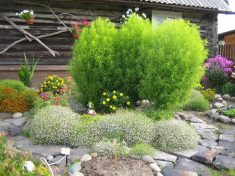Gypsophila is a surprisingly unpretentious and decorative flower that florists love. This plant looks great not only in flower beds, but also in bouquets. It stands for a long time in cut, suitable for creating winter compositions of dried flowers.
Material Content:
Description of species and varieties
Gypsophila is an annual or perennial plant that belongs to the clove family. The name of the flower is literally translated as “loving lime”, because in nature it grows on soils rich in this substance.
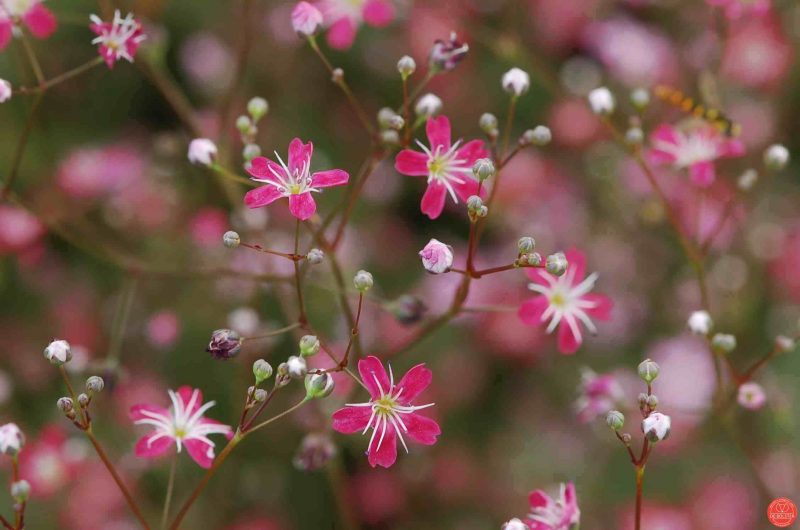
There are about 100 different species of plant described.
From annual varieties cultivated:
- Gypsophila graceful. The stalk is from 30 to 75 cm, grows with an annual bush dotted with a large number of small flowers - pink, red or white.
- Gypsophila wall. It forms a sprawling bush up to 30 cm high. The flowers are pink, very small, bloom all summer.
Perennial species are more numerous, on their basis varieties with a various shape and color of flowers are bred:
Gypsophila creeping.
Perennial plant with white or pink small flowers, a stalk about 20 cm high. Varieties:
- "Fatensis" - pink corollas;
- “Latchworth Rose” - a pink variety;
- "Monstrose" - white flowers.
Gypsophila paniculata. During flowering, it resembles a white cloud. The stem can reach a height of 120 cm, there are many branches on it, thanks to which the plant resembles a ball. The leaves are small and narrow, flowers in diameter of 6 mm, of various colors, bloom in the second half of summer.
Varieties:
- "Flamingo" - a tall bush with double pink flowers;
- "Pink Star" - a dark pink variety;
- "Bristol Fire" - flowers are large, white, with a double whisk;
- "Rosenshleyer" - a creeping bush about 40 cm high, pink terry flowers bloom in June and bloom until September.
Gypsophila is tender.It grows in Siberia and Altai. Blooms in the first half of summer with pink or white flowers, the stem grows up to 10 cm in height. The leaves are green, narrow, form a basal rosette.
Gypsophila pacific. Perennial up to 80 cm high with a highly branching stem. Leaves are grayish-blue lanceolate. The flowers are light pink, blooming in late summer - early fall.
All types of plants under discussion grown in the garden can be used to cut to create beautiful bouquets.
Gypsophila cultivation from seeds
Gypsophila is grown by direct sowing in the ground. The plant does not like transplants, since it has a root root.

- They begin sowing annuals in March. Then you can repeat this process after a certain period, for example, every 2 weeks, so that there is continuous flowering on the flowerbed.
- Perennial species are sown in late April or early May. In the first year, only stems and leaves will grow, and the plant will bloom in the first half of the summer of next year. Seedlings sprout quickly and amicably.
Outdoor landing
In the flowerbed for gypsophila, a well-lit place is chosen. The soil is prepared in advance by adding lime and sand to it.
The plant does not tolerate stagnation of moisture at the roots.
Therefore, if groundwater is located on your site close to the surface, it is better not to plant it, because it will die anyway.
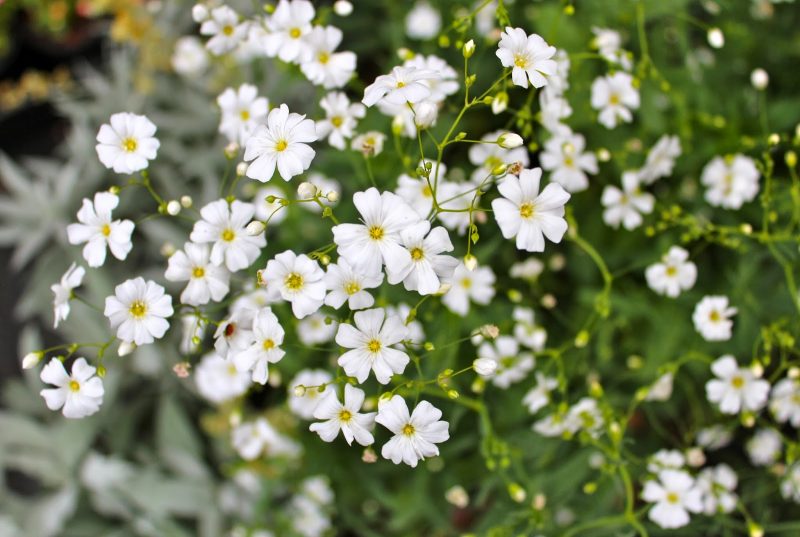
Gypsophila flower can tolerate slight shading, 2 or 3 perennial plants are placed on 1 m2 of flower beds, they grow without transplantation in one place for up to 25 years.
Features of courtship for gypsophila
Plant the plant on well-lit flower beds. It is unpretentious, prefers fertile, calcareous soil.
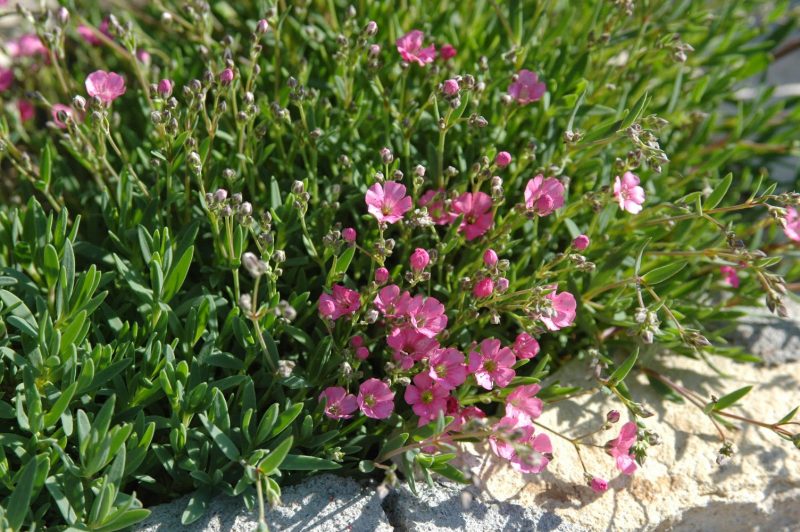
Caring for different species has slight differences:
- Gypsophila paniculata does not like transplants; it grows beautifully in one place for many years. Sandy, dry soils are more suitable for her, she tolerates frosts well, but it is desirable to cover varietal forms in autumn.
- Gypsophila is planted tender on a sunny flower bed, gravel and humus are added to the soil. The plant needs regular watering, does not like drying out of the soil and stagnation of water at the roots.
- Creeping gypsophila after flowering is cut to stimulate the growth of basal shoots, from which good cuttings are obtained. The plant does not require special care, the soil for successful cultivation must be neutral or alkaline, easily passing moisture and air.
- Pacific gypsophila, although it belongs to perennials, is short-lived. Every 3 to 4 years it must be renewed by sowing seeds. The variety is winter-hardy.
All varieties of plants are preferably fed in the spring with complex fertilizers.
Plant propagation methods
Perennial and annual gypsophila is well propagated by seeds, which are collected in the fall, and sown in the open ground in spring, as soon as the soil warms up.
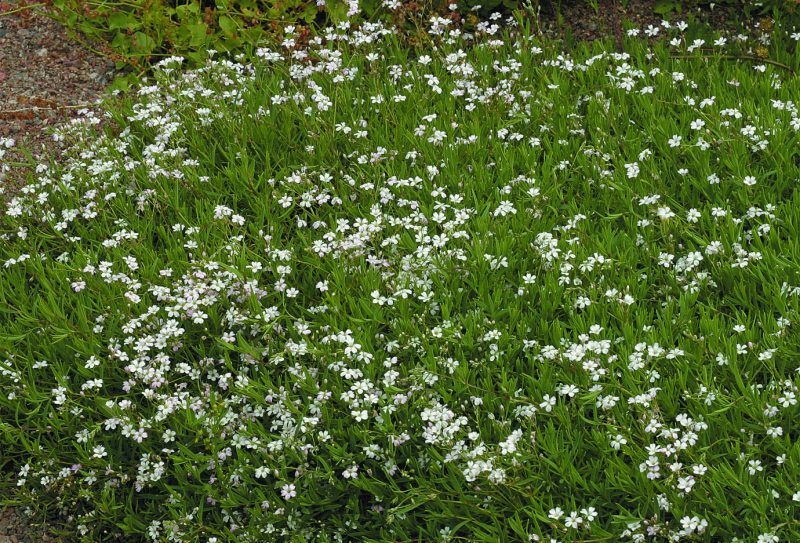
Gypsophila tender and creeping is propagated by cuttings in early summer, but compared with other plants, it is rooted weakly. Cuttings do not tolerate moisture, they need careful care.
For the reproduction of terry forms, a vaccination is used. Cuttings of such varieties are grafted onto a root of non-double plants.
Pest and Disease Control
With improper care, a dense planting, weeds, excessive watering, gypsophila can become more vulnerable.
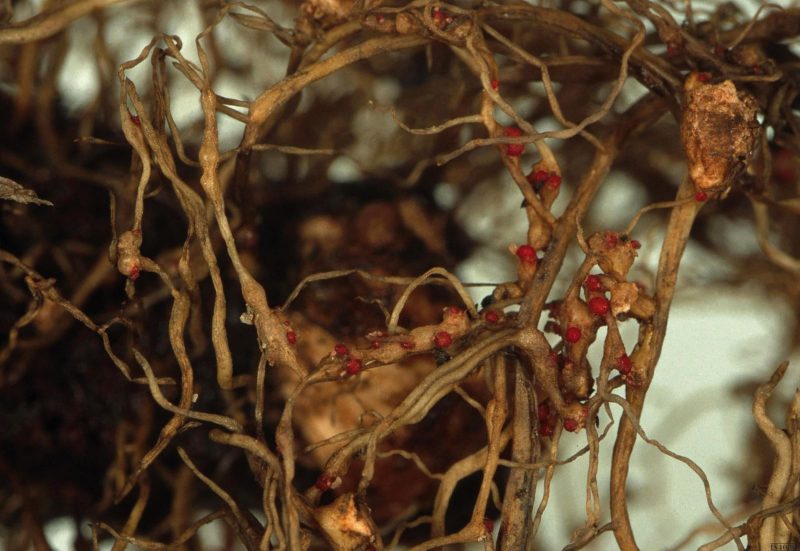
Plants are prone to such diseases:
- gray rot;
- rust;
- jaundice;
- nematode;
- smut;
- rot of the base of the stem.
For the prevention of diseases, perennial gypsophila are treated several times a season with fungicides. Plants infected with a nematode are uprooted and burned.
Gypsophila in landscape design
Use gypsophila for growing on flower beds and creating bouquets. It is combined with any flowers, its fluffy inflorescences will decorate the flowerbed and mixborder, they will look beautiful in single plantings. The gypsophila is especially in harmony with zinnias, eschscholtia, marigolds and proudia.
Creeping gypsophila, which is a perennial, can be planted in the rockery or alpine hill in the foreground.Her stalk is low, it grows, completely covering the soil, like a fluffy cloud. It grows even on pebbles and stones, where it is difficult for other plants to survive.
Winter bouquets are made of dried flowers of gypsophila, they retain their decorative effect for a long time and continue to delight with rich colors.




